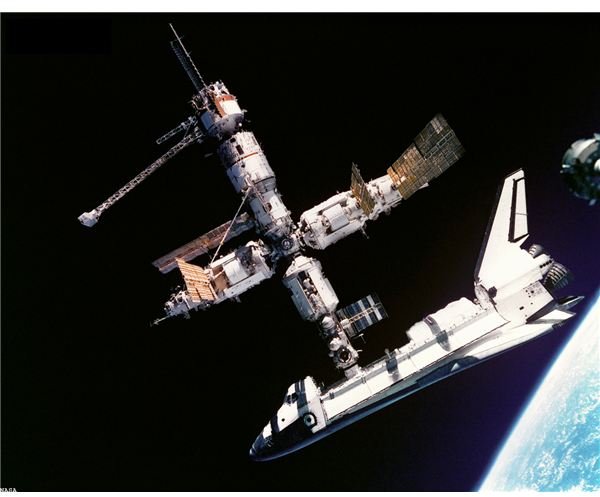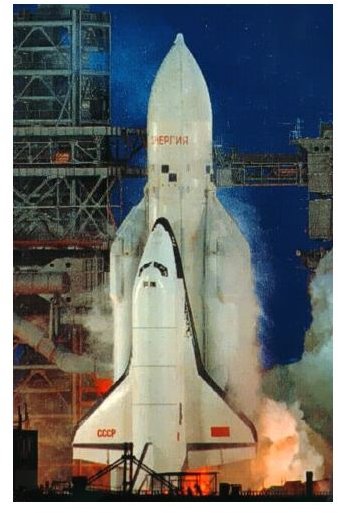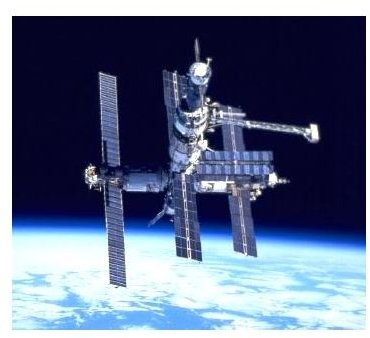The Russian Space Program - In the 1980's: The MIR Space Station and the Buran Shuttle Project
MIR and Buran


Images
Images from left to right: The Russian Space Station Mir; Mir docked with the US Space Shuttle, Atlantis; The Russian Shuttle, Buran.
The MIR
The project of the MIR, (Soyuz-8) space station began to form in 1976 when the “Energy” Institute had released its proposals on the creation of an advanced, long-term space station. In August, 1978, the outline of a new station had been revealed. In February, 1979, the work on creation of a new-generation space station had begun – starting with the main block (core), and the onboard and scientific equipment. But at the beginning of 1984 all resources had been reallocated to the program, “Buran” and work on the station was practically frozen. Only after pressure from high-ranking politicians was the project was resumed, with the goal set to finish the first station module by the XXVII congress of Communist Party (due in March, 1986).
The core module had been put into orbit on February, 20th, 1986. Then, within 10 years, one after another of six more modules were added: Soyuz, Progress, Kvant and Kvant-2, Kristall, Spektr and Priroda. One more addition was made in 1995 – never the part of the original project – the Space Shuttle Docking compartment, enabling US Space Shuttle to dock at MIR.
Starting from 1995 international crews began visiting the station. Overall 15 expeditions were sent to MIR with astronauts from Syria, Bulgaria, Afghanistan, France, Japan, Great Britain, Austria and Germany. Also, during the MIR-Shuttle program, 8 short-term missions were performed by American shuttles, Atlantis (7) and Endeavor. Thirty-four astronauts visited the station throughout these missions. Overall, 104 astronauts from 12 countries worked aboard the MIR station.
By the end of the nineties, the station began to experience numerous problems and malfunctions of various devices and systems. After some period of time, the government of the Russian Federation, referring to extremely high costs of further maintenance and despite several “MIR-saving” projects, made a decision to abandon the station. On March 23, 2001, the station, which had been operating three times longer than the originally planned, re-entered the atmosphere and disintegrated, with its larger parts crashing into a southern part of Pacific ocean, near the Fiji islands.
The BURAN
Research, lead by the Institute of Applied Mathematics of the USSR, during 1971-1975, indicated that the USA, having commissioned the reusable Space Shuttle system, could gain a serious military advantage by using it for nuclear attack. The necessity of creating a reusable space system was thus regarded by the Soviet politicians as a means of preventing “the potential opponent” (the Americans) from gaining a decisive advantage in space.
The first version of Soviet transport space system (OS-120), proposed in 1975 was, as a matter of fact, very similar to the “Shuttle”. The difference was merely seen with the installation of 4 liquid-fuel rockets rather than the two solid-fuel ones in the American version. In 1976 an updated version (ОК-92) had been offered — engines of the second stage have been moved from the orbital ship itself to a separate fuel tank of the second stage. That allowed combining the development of the reusable spacecraft with a creation of the rocket “Energia”. By 1978 the project “Buran” has got the it’s final shape.
It took another 10 years and the first (and eventually the only) space flight of “Buran” took place on November, 15th, 1988. Duration of flight was 205 minutes, the ship has circled Earth 2 times and successfully landed at the Yubileiniy airfield in Baikonur. It was a completely automatic flight with the use of an onboard computer – contrary to the Space Shuttle which can land only on manual control.
However, the project did not succeed. Almost every test failed, several cosmonauts were killed during Buran test flights (all performed in an aircraft regime). Although the fact of the “Buran” space flight, and its descent to the Earth in an automatic mode controlled solely by onboard computer was included into the Guinness Book of Records, the project was cancelled altogether in 1993, leaving 5 Buran prototypes at various stages of completion.
References
Content:
https://www.russianspaceweb.com/mir.html
https://old.spaceonline.tv/mir.htm
https://www.buran-energia.com/
Images:
https://chandrakantha.com/articles/indian_music/filmi_sangeet/media/1986_mir.jpg
https://iss.jaxa.jp/shuttle/flight/sts91/pict/top_mir.jpg
https://ru.wikipedia.org/wiki/%D0%A4%D0%B0%D0%B9%D0%BB:Buran.jpg
This post is part of the series: Soviet/Russian Space Program - a Review
This series reviews the development and advances of space technology and programs by the former Soviet Union and Russia.
